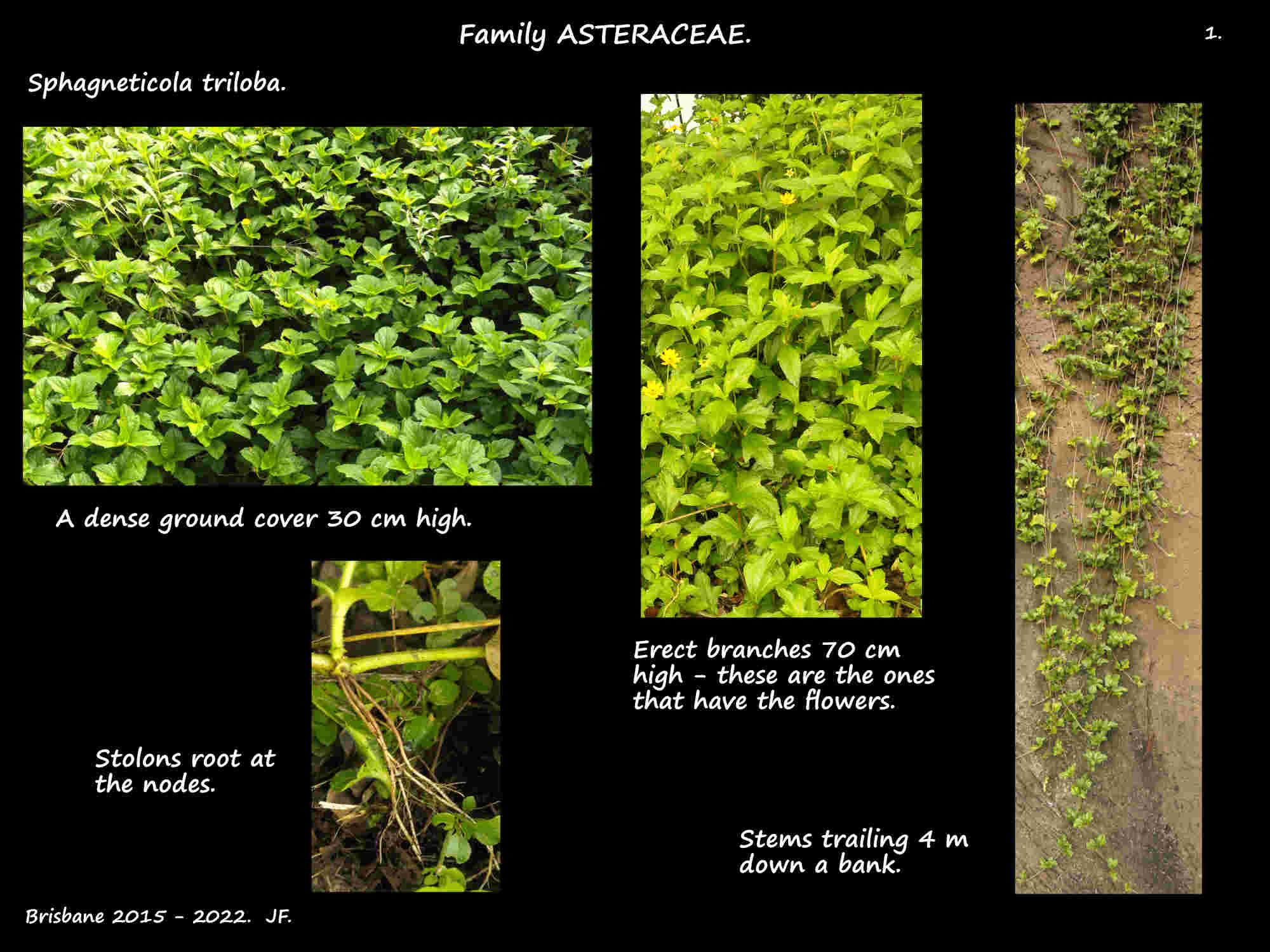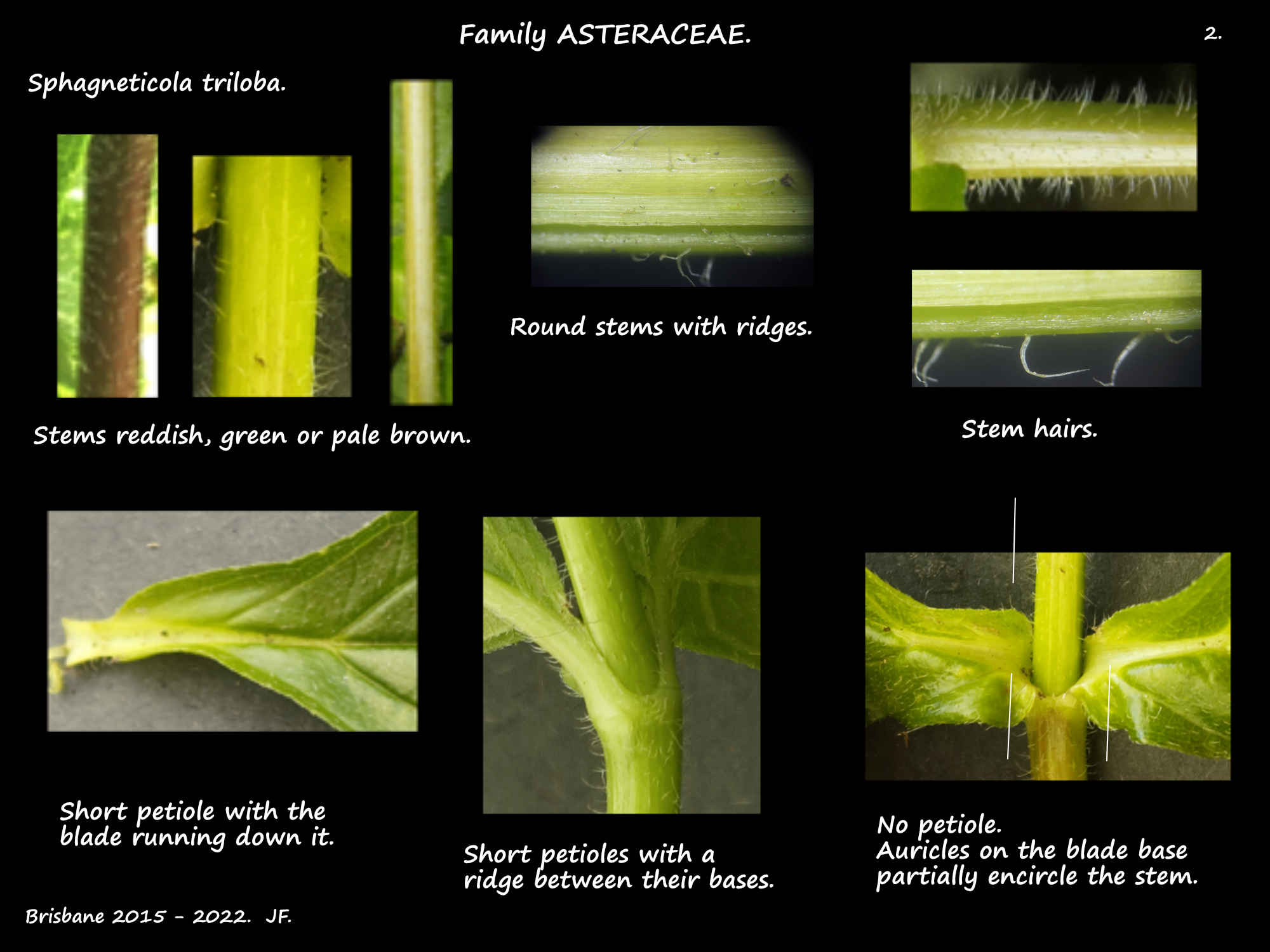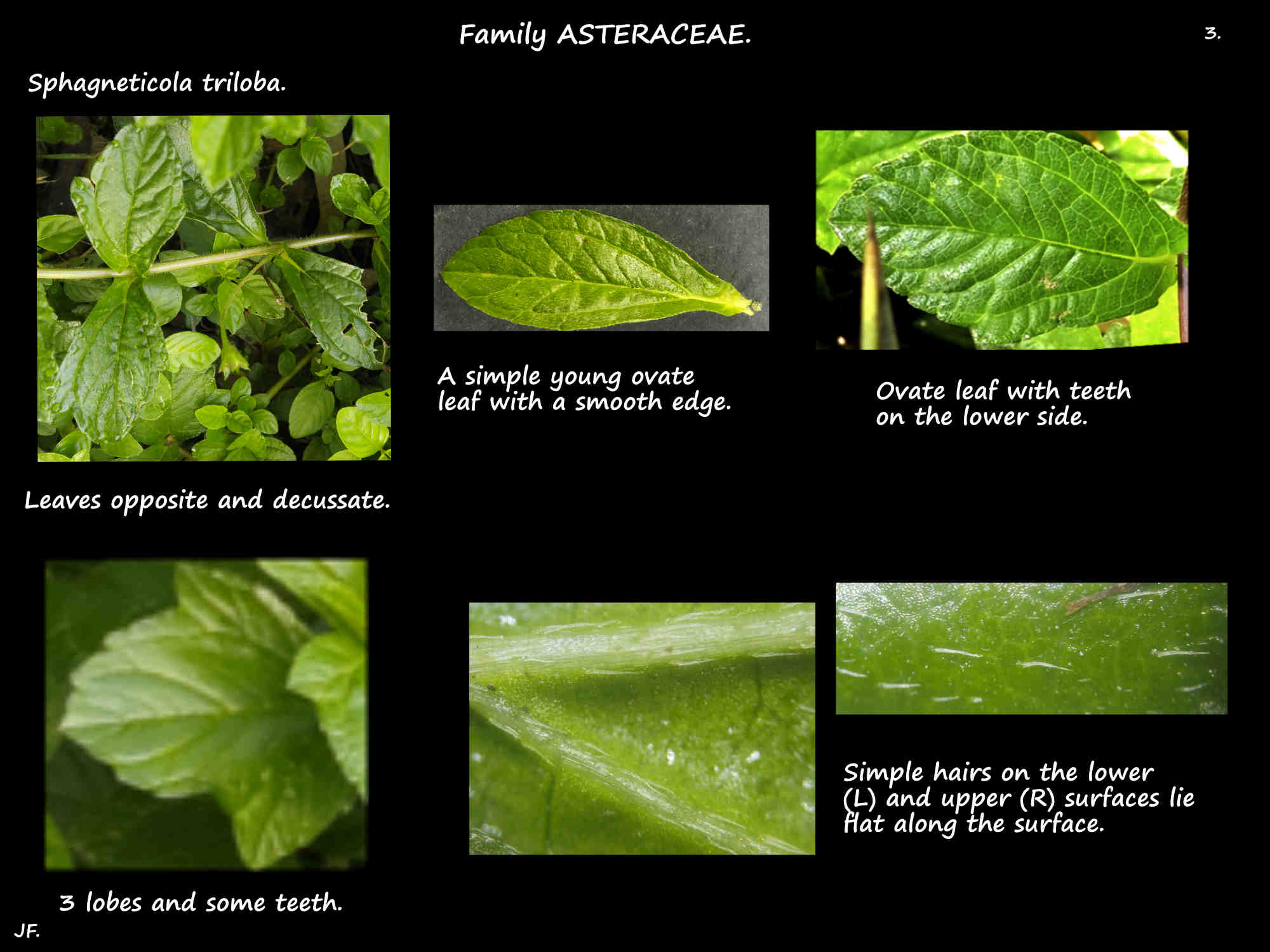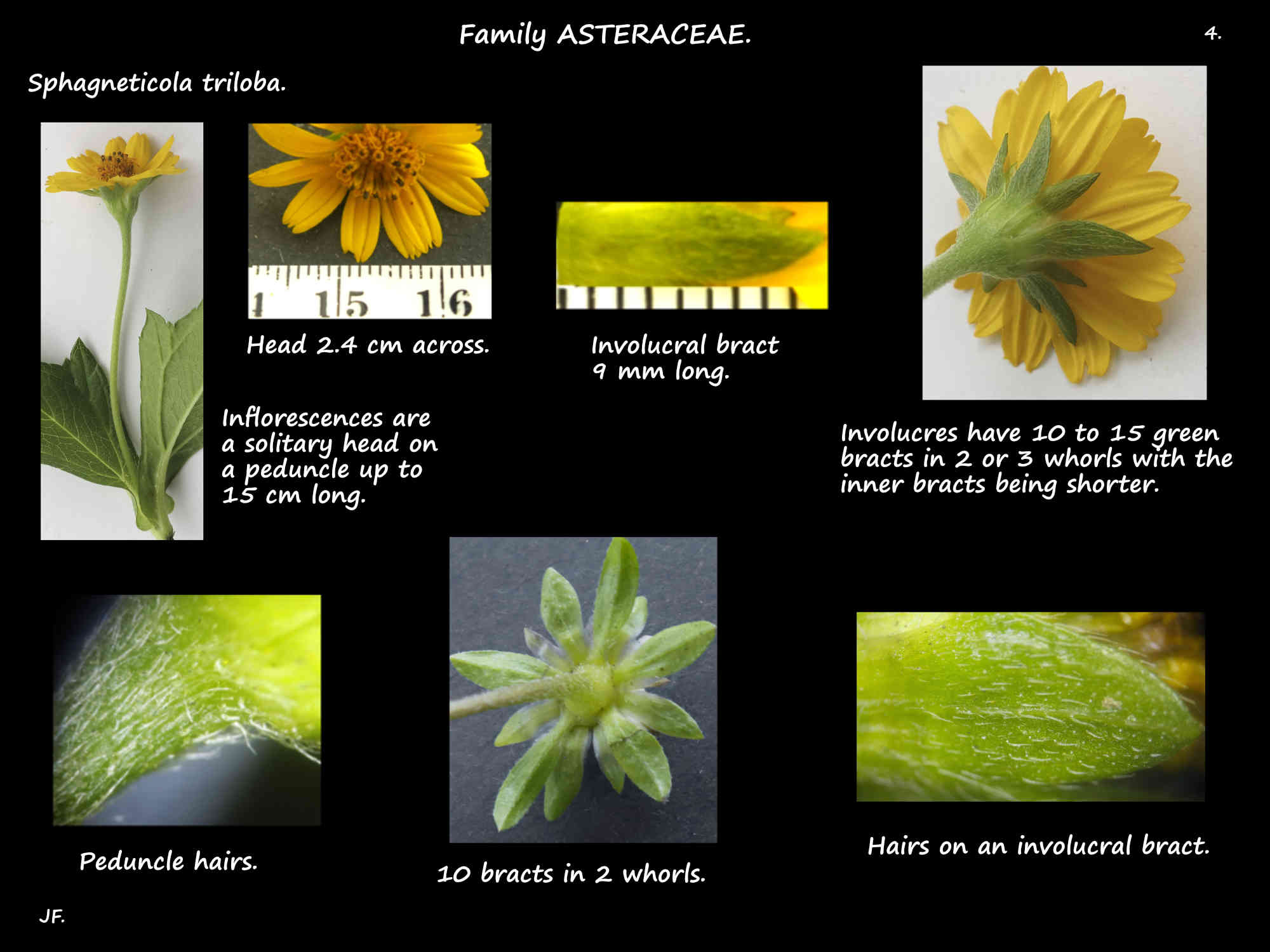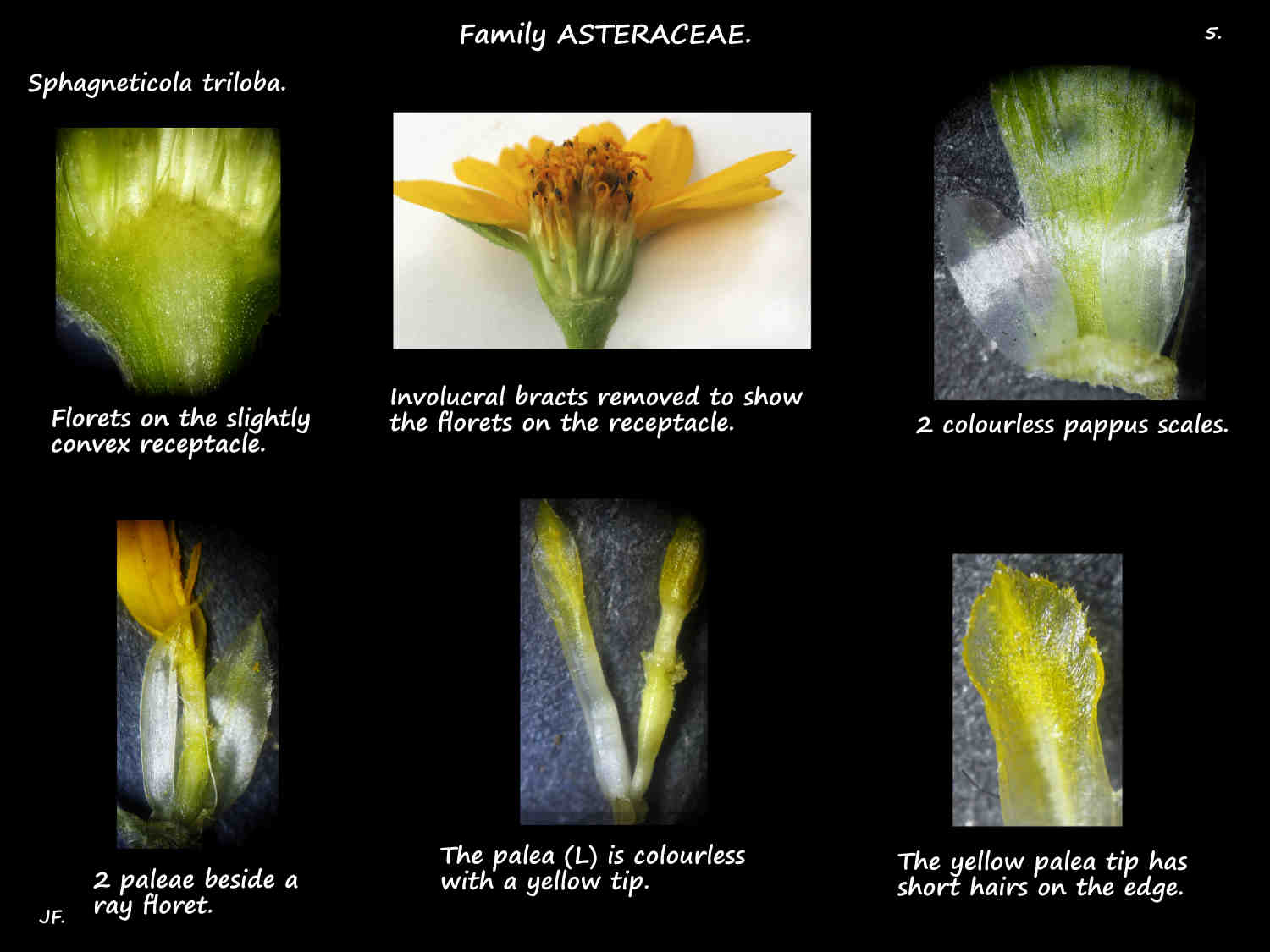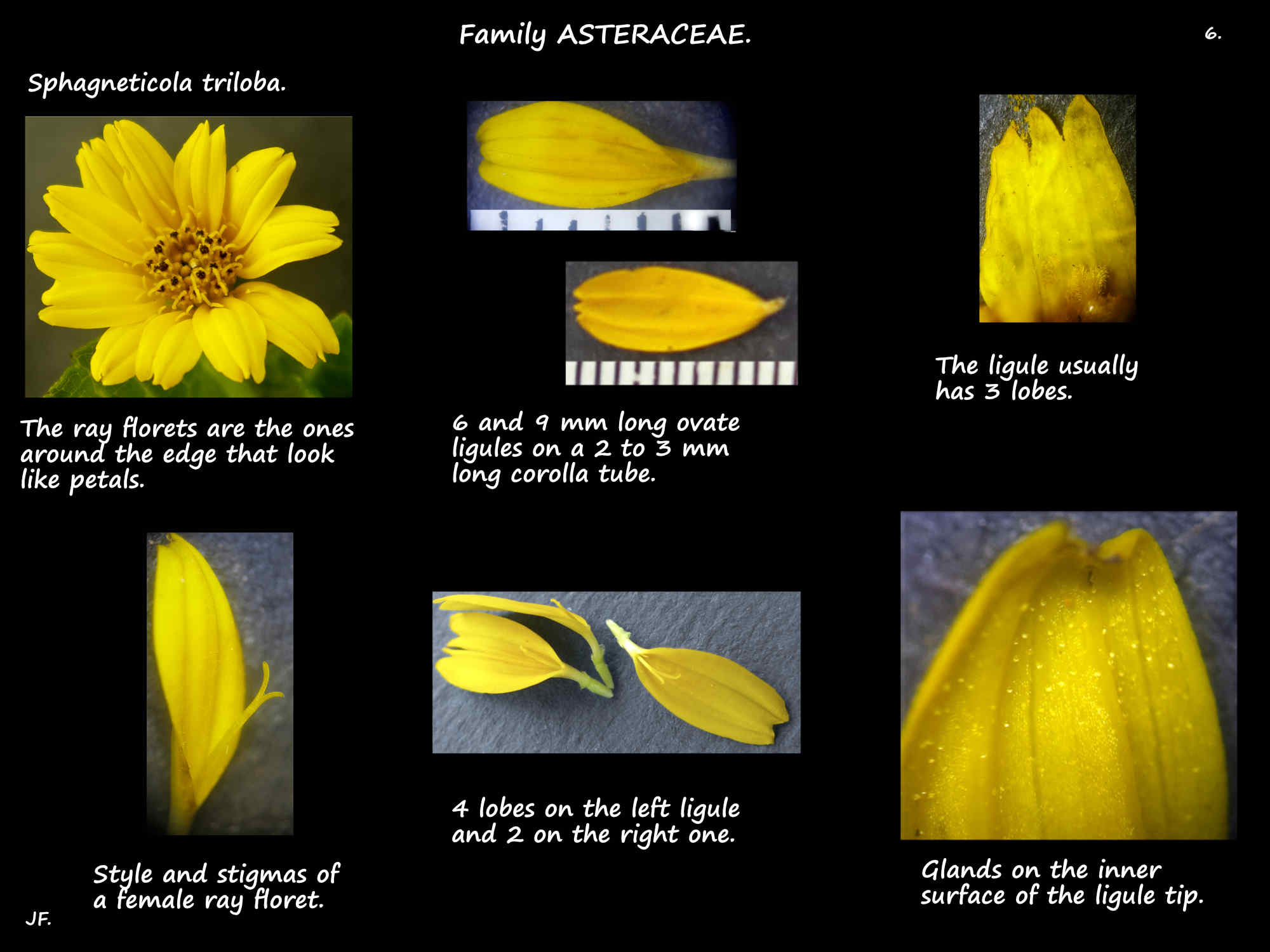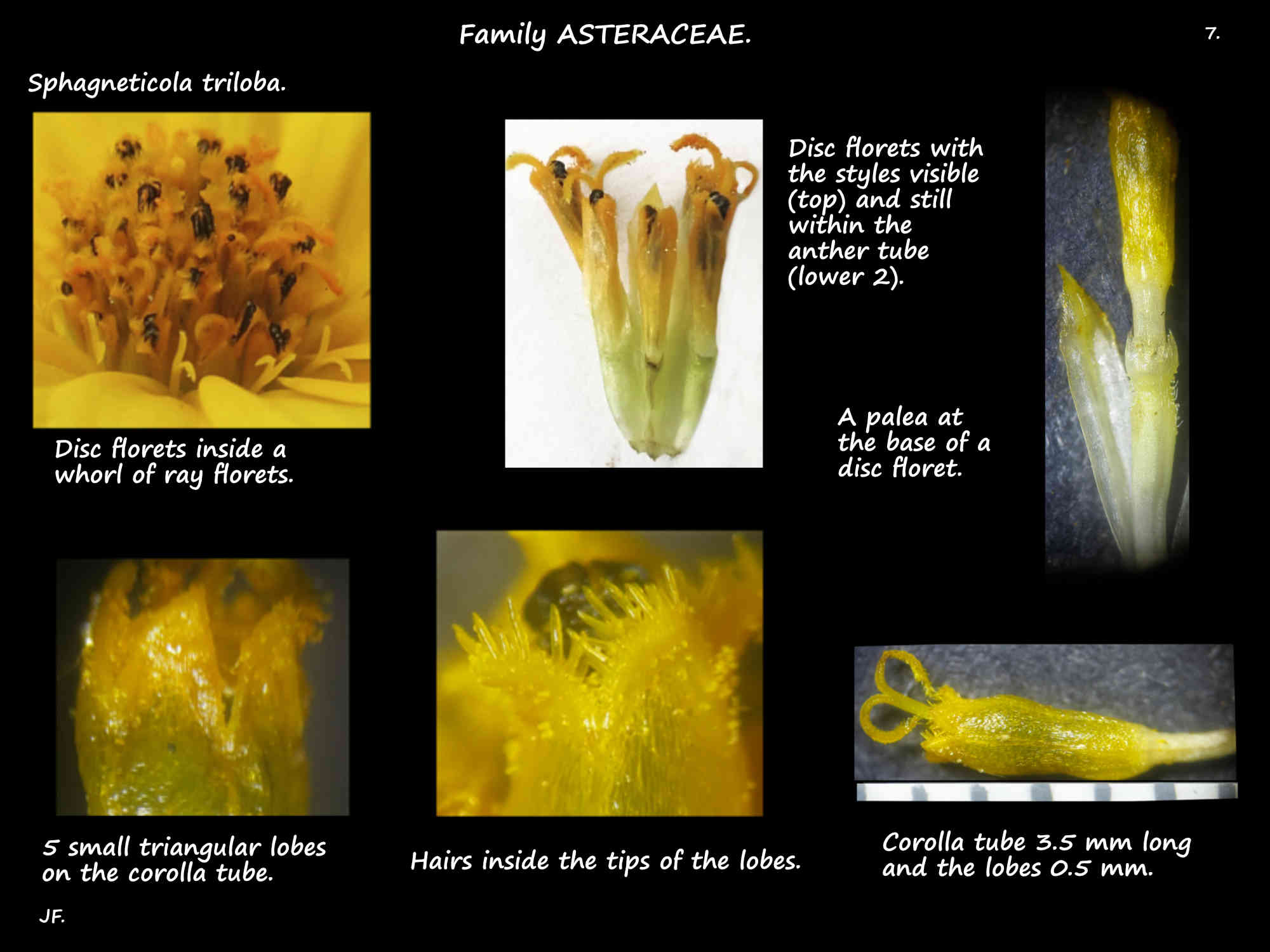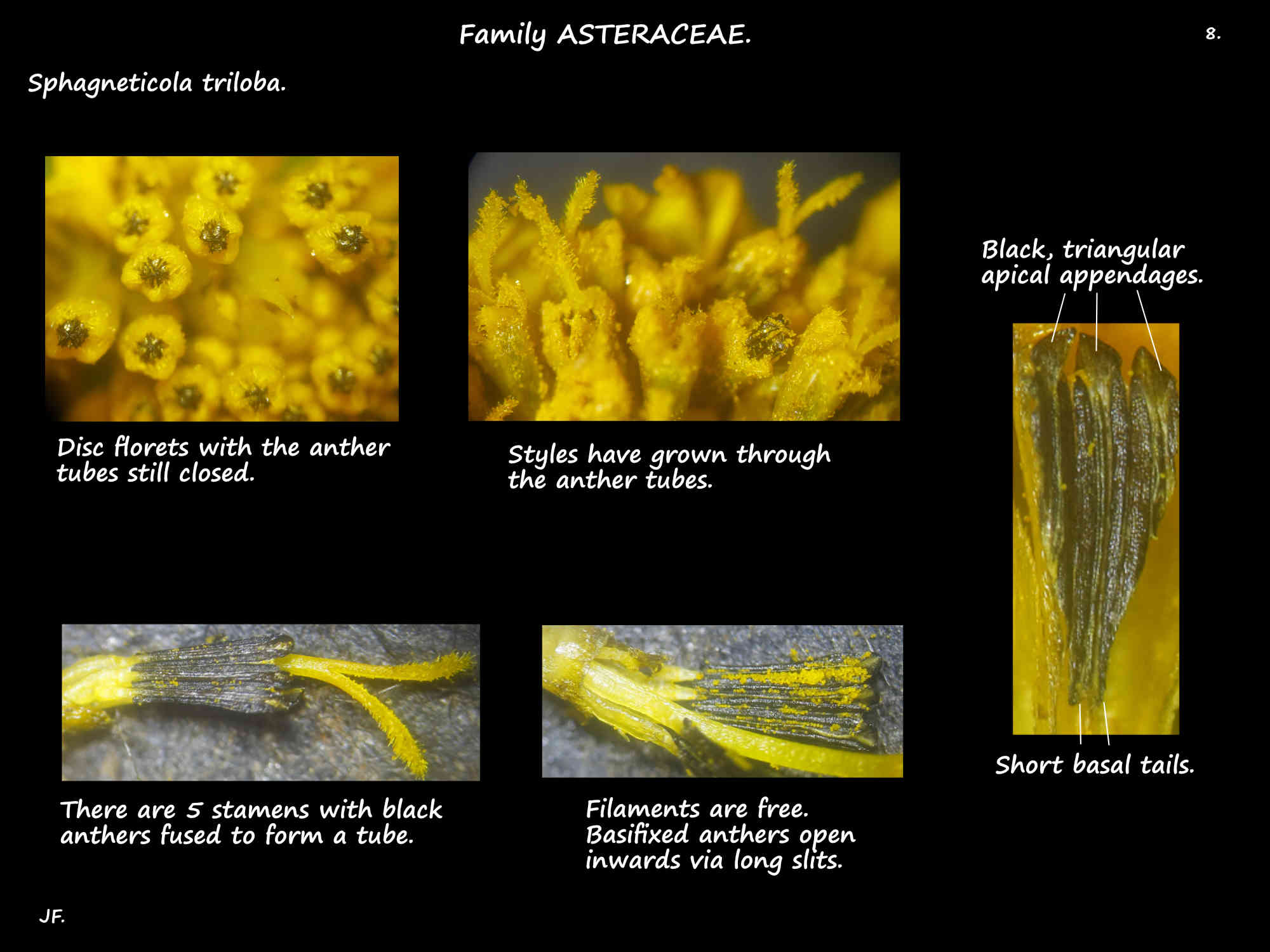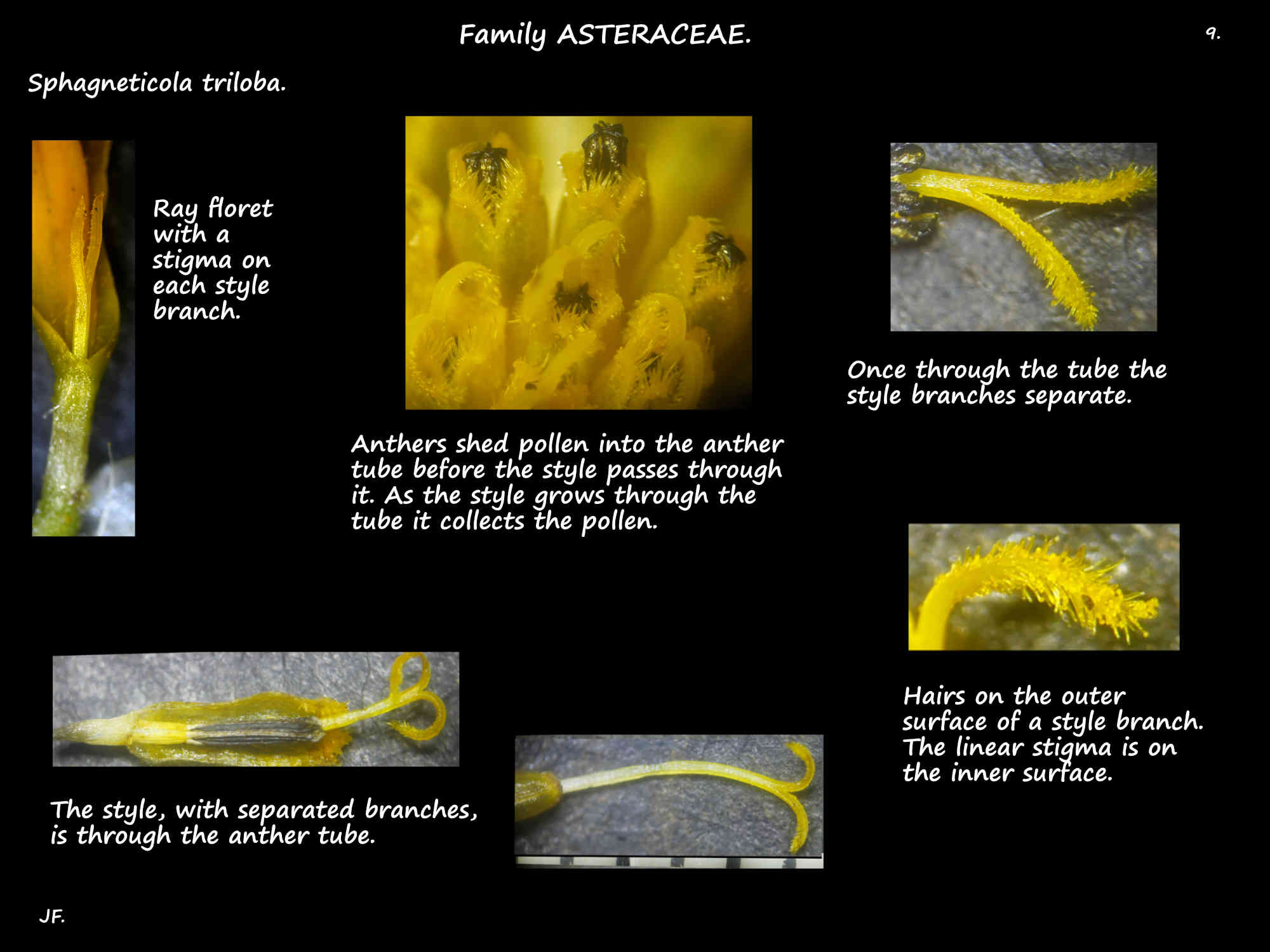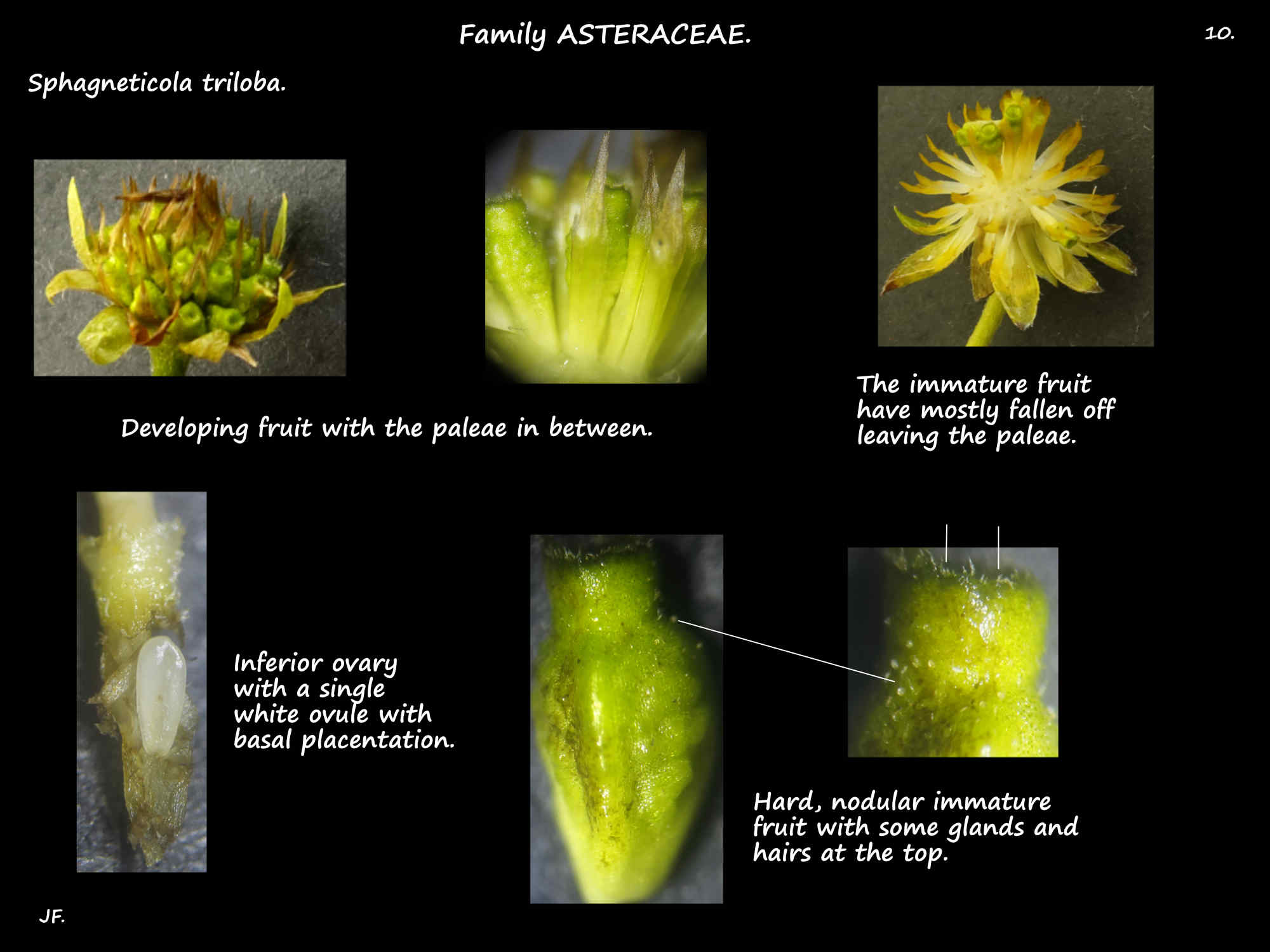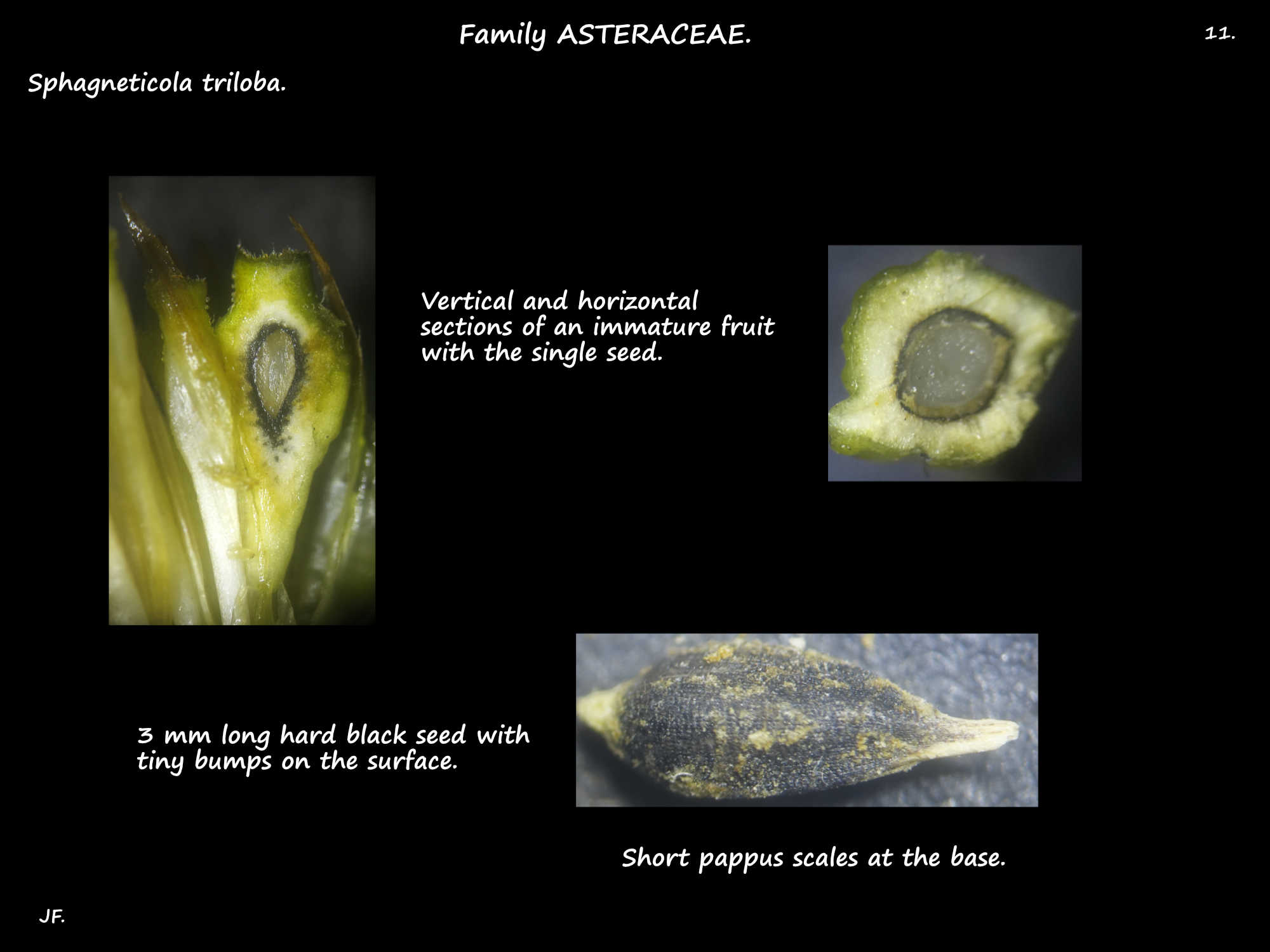Sphagneticola triloba.
Also known as Wedelia triloba it is one of only 5 species in the Sphagneticola genus which is characterised
by being herbs with stolons that root at the nodes, terminal heads that become lateral, glands on
the ray petals, black anther appendages and fruit often with a collar at the top.
The Singapore daisy was introduced into Queensland to stabilise banks along roads and railways and it is also a
popular garden ground cover.
It is widely naturalised in S. E. Queensland where it is an environmental weed.
It is a perennial creeping herb that will scramble and climb over any support.
They are vigorous plants that can quickly grow over other vegetation.
Stems up to 4 m long creep along the ground and root at the nodes.
Erect stems branch off the stolons and, with no support form dense mats usually around 30 cm high.
With support they can scramble and climb up to 70 or 100 cm.
The round stems are green or reddish and may have a few hairs.
The simple, slightly fleshy leaves are opposite (sub-opposite) and decussate.
There may be no petiole but where there is one it is very short.
Young leaves are ovate to obovate with a smooth edge.
Adult leaves can be up to 10 cm long and 8 cm wide although they are usually smaller.
They can be elliptic to ovate and usually develop 3 (5) lobes of varying prominence.
The edges are toothed, the tip round or pointed and the base is wedge-shaded.
The base usually has 2 lobes or auricles that extend onto the stem.
There are 3 main veins at the base and 2 or 3 lateral pairs above that.
The glossy lamina is wrinkled between the veins.
Inflorescences are a solitary head or capitulum in the upper leaf axils of erect stems that are 50 to 70 cm high.
The erect peduncle is up to 15 cm long with stiff, sharp hairs that lie along it.
The head is around 20 to 35 mm across and has a slightly convex receptacle.
Flowers are present for most of the year.
The green bell-shaped involucre has 10 to 15 bracts in 2 or 3 whorls.
The lanceolate bracts are up to 1 cm long with the inner whorl being shorter than the outer.
They have hairs lying flat along their outer surface.
The pappus consists of sepals modified into short colourless scales with hairs near the tip.
The paleae at the base of the florets are lanceolate or linear and have a few hairs.
They are colourless with a yellowish tip.
When the seeds have gone the paleae remain forming the chaff.
The radiate heads have both ray and disc florets in spirals on the receptacle.
There are up to 13 ray florets each subtended by a palea.
They have a bright yellow ovate ligule up to 15 mm long with 3 (2 or 4) lobes.
There are spherical glands, without stalks on the inner surface of the tip of the ligule.
Ray florets are female and fertile with an ovary, style and stigma but no stamens.
There are about 15 yellow disk florets in the centre of the head each with a palea.
Their corolla tube is 5 mm or more in length with 5 small triangular lobes that have hairs on the inner surface.
Florets are bisexual with stamens and an ovary.
The 5 stamens have black anthers that are united into a tube around the style.
The oblong, inferior ovary has a single locule with one basally attached ovule.
The style has 2 branches with the linear stigmas on the inner surface and short hairs on the outer.
The fruit are slender brown cypselae (often called achenes) about 5 mm long.
The pappus remains attached and there are some hairs and glands on them.
Seeds from ray florets are 3-angled while those from disc florets are 2-angled.
Very few seeds mature and reproduction is mainly vegetative.
J.F.

